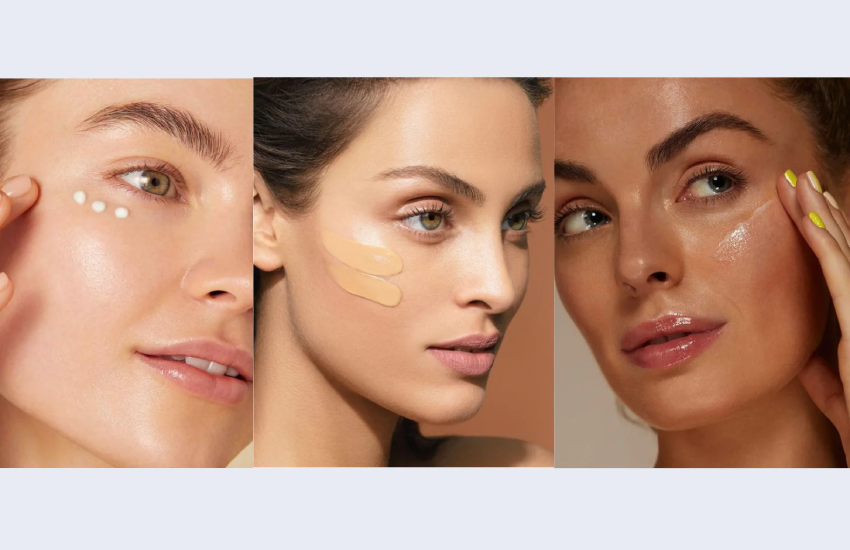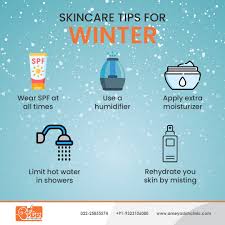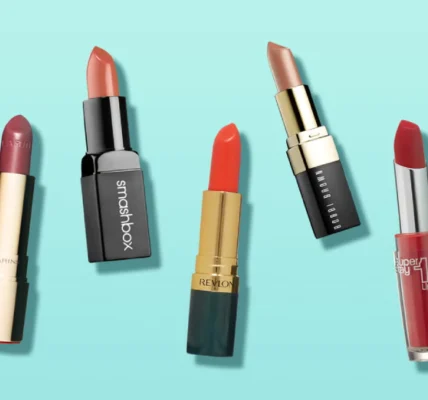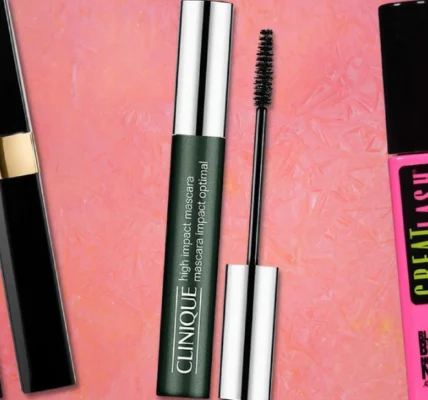Your skin type in any makeup application, however, it is a question of the concealer doing or changing an appearance by tending to hide the flaws tenderly according to your skin type. Still, one of the more diverse tools can be picking out the perfect concealer for concealing any redness or imperfections; covering those very obstinate circles that appear from an all-nighter to highlighting a glowing, airbrushed face, the right concealer will make quite some difference for your skin type.
The problem is, sometimes it’s not that easy to find one that fits your skin type. With all the different formulations, colors, and textures out there, it can be tough to pick one that best fits your skin type and meets your particular needs. An uneven finish, wrinkles, and patchiness are just a few of the problems that can come up when using the wrong product for your skin type.
From determining your skin type and how the different formulations vary, to becoming a master of shade selection and application methods, this book covers all you need to know to achieve that perfect, long-lasting look. With the right advice to guide you, it’s possible to achieve a smooth, natural finish that will enhance your natural beauty for your skin type.
1. Identify your skin type:
In the selection of concealer, your skin type, concern, and finish should be put into consideration. Since every skin type differs from others, sometimes just finding a concealer that is close to your skin tone will do the magic in making your look flawless and long-lasting. Let this detailed guide help you make the right choicefor your skin type:
Oily Skin:
Your biggest concerns for skin type are shine and how quickly your makeup is going to disappear in the middle of the day. Go for a concealer that has a semi-matte texture and is long-lasting but won’t clog pores that matches your skin type. The light, oil-free formula with buildable coverage should be your go-to option for your skin type. Look for “oil-absorbing,” “shine-free,” or “long-lasting” on the packaging.
Dry Skin:
Your skin type needs moisturization. Creamy or moisturizing concealers are ideal for a satin or dewy finish since they neither settle into fine wrinkles nor highlight dry areas. It is best to avoid matte products since they tend to accentuate texture. Hyaluronic acid, glycerin, and vitamin E are some of the ingredients that help in keeping the skin hydrated throughout the day.
Combination Skin:
Your skin type requires a more customized approach. The T-zone of the forehead, nose, and chin usually is oily, but the rest of the facial skin is either normal or dry. Apply a matte, oil-free concealer to the T-zone in order to rid it of shine. For the drier parts, such as the cheeks, use a moisturizing or creamy concealer. Dual-purpose concealer palettes may also be appropriate for this type of skin.
Sensitive Skin:
Gently formulated, non-comedogenic products, and avoiding common skin irritants such as alcohol, artificial coloring, or scents are ideal for sensitive skin or skin prone to inflammation. Look for hypoallergenic concealers to help soothe the skin with active calming components like aloe vera, chamomile, or green tea extract. When it comes to sensitive skin, the best option is usually mineral-based concealers.
This will give you time to match your concealer with your skin type so that makeup turns out smooth, nice, and long-lasting.
2. Determine Your Concealer Purpose:
Different skin problems require different concealers for optimal effectiveness. If you know why you’re wearing concealer, it will be easier to select the right shade, formula, and level of coverage. Here are some specific recommendations for a variety of problems:
Dark Circles:
For dark circles under the eyes, one should go for concealers that have an undertone of peach or orange to help cancel the tone of blue and purple common there. Dusky skin with deeper tones should search for stronger tones of orange whereas lighter skin will do well on a gentle peach shade. Take a moisturizing, creamy formula that won’t accentuate fine lines or wrinkles. Here, it is better to avoid matte finishes as they make the under-eye area appear lifeless and dry.
Redness and Blemishes:
The redness, acne marks, and blemishes require concealer that would be full coverage. The color should just be the exact color of your foundation for a perfect blending action. To cancel out redness, look for concealers with shades of green because green can always neutralize red. Stick or pot concealers will be great when applying targeted coverage to any specific problem areas. Make the formula non-comedogenic; this will not block your pores.
Highlighting:
Concealer will give your skin an uplifted look and brighter, usually one to two shades lighter than your skin color. Apply light on the bridge of your nose, forehead’s center part, chin, and under the eyes, and blend them well. For a light and natural look without building cake, opt for a lighter, easily blended product.
Smoothening the Complexion:
The ideal way to get an even base would be to use a concealer in a shade that happens to complement the skin tone. Of course, that gives a seamless transition and easily blends into either your foundation or just bare skin. The medium to buildable liquid concealers for this would do their job right, as they tend to give a natural skin tone without any heaviness. Where repair has to take place, add it sparingly for a new, natural look.
The concealer will allow make-up application to be adapted to work around certain problems, achieving a flawless, polished finish by understanding what your concealer is for.
3. Choose the Right Formula:
Formula is a big determinant of how your concealer looks and feels, going onto your skin. Different formulas will innately pull different coverage levels, and each skin type takes to a formula differently. To help you choose the right one, here’s detailed information:
Liquid Concealer:
All skin types, though combination and oily skin types love it.
Benefits: There are quite a few types of liquid concealers, ranging from very sheer to full, buildable cover. They go on natural, and light, and will blend into the skin to make it fitting for under-the-eye or general spot coverage.
Ideal Uses: It’s great for under the eye area, camouflaging minor imperfections, and evening the skin tone. Satin or illuminating finishes are way much better for dry or more mature skin and the matte formulations are just fantastic to cut shine.
Cream Concealer:
Excellent for dry or mature skin.
Benefits: The texture of cream concealers is smooth and blendable. Their coverage can range from mild to full. Most of them come in compact or pot form. Because of their creamy texture, they never cake or crease, hence can be very suitable for arid environments.
Perfect for: Dark circles, hyperpigmentation, and minor imperfections. Since the concealer is more hydrated in texture, it is great to make the skin behind the eyes appear insensitive.
Concealer Stick:
Great for: normal to dry skin.
Benefits: The stick concealers apply right onto the skin and are rather pigmented, which allows creating midrange up to full coverage and quick touch-ups on the go. Because of their solid structure, the stick concealers are portable and convenient.
Best for: Very good at covering certain areas, like redness, black spots, or blemishes. Not great for oily skin because they can be thick and tend to crease after some time.
Pot Concealer:
Suitable for: All skin types, though ideal for those wanting full coverage.
Benefits: With their great coverage and usually thicker texture, pot concealers are ideal for blemishes, scars, and discolorations that are particularly stubborn. Many have a long-lasting formula.
Best Uses: Perfect for covering major flaws, redness, or hyperpigmentation. The rich texture is best applied with a brush or your fingertips for precision but must be well-blended to avoid a noticeable finish.
The right formula of concealer, based on skin type and the coverage that needs to be done, gives the perfect, natural finish of the skin while allowing comfort and wear of your makeup throughout the day.
4. Match Your Undertone:
To make the best choice of a concealer that looks natural and will perfectly fit, one should have an idea about the undertone of the skin. The undertone is that very pale color that forms the base beneath your epidermis and can be neutral, chilly, or warm. A concealer with your correct undertone will create a harmonic match to your natural complexion and foundation.
Comforting Undertones:
How to Tell: You have a warm undertone if you have an olive, yellow, or golden complexion and you tan well. The gold jewelry tends to be better on your skin than silver, and the veins on the wrist may appear greenish.
Application Tip: Use a concealer with a gold or yellow undertone. This will subtly cover dark spots or blemishes in your complexion without looking ashy.
Cool Undertones:
How to Tell: If your skin tone is pink, scarlet, or even bluish, and you burn rather than tan, chances are you have a cool undertone. Also, if you seem to look a lot better while wearing silver jewelry, and if your wrist veins appear bluish.
Concealer Tip: Get concealers with undertones of pink, red, or rosy suitable for your skin tone. That would be great for counterbalancing dark circles having a blueish undertone and giving the skin a light shining appearance.
Neutral Undertones:
How to Tell: Your skin has a proper balance of both warm and cool tones and does not showcase any marked pink or yellow undertones. Your wrist veins may look blue-green, and both silver and gold jewelry looks equally good on you.
Concealer Tips: Choose concealers that are neither too warm nor too cool; this way, the colors will not be jarring and will simply melt into your skin tone.
5. Test in Natural Light
Wear them under the right light for a perfect concealer shade, as tones of makeup appear differently on skin under artificial lighting, especially fluorescent and poor interior lighting.
How to Test:
Apply the tiniest amount of concealer on your jawline since it represents the color of face and neck most exactly.
Dab the concealer with your fingers, sponge, or brush lightly.
Now go outside in the daylight and look in the mirror.
The perfect tint is one that will blend into your skin tone and not stand out or show any contrast or lines.
Expert Tip: When in doubt between two colors, just choose the darker of the two; too light of a hue can make the imperfections or puffiness around the eyes stand out.
Since your skin tends to be one tone lighter in the winter, and one tone darker in the summer, you can also try switching up the concealers according to the seasons.
You will effectively be able to blend your concealer without looking overt or out of place by matching your undertone and testing in natural light, which will only highlight your inherent beauty.
6. Check for Longevity & Ingredients
It is great to wear an excellent concealer on the face, but it also needs to look fabulous during the day. The only thing you should do is select such products with elements that will contribute to treating your skin and just avoid issues like itching, fading, or crumbling.
Long-Lasting Apparel
Why It Matters: You want a concealer that will last so you can wear your makeup all day with few touch-ups, whether you have oily skin or are busy.
What to look for: Generally, formulas labeled “long-wearing,” “smudge-proof,” or “waterproof” will last longest since they are less likely to migrate into fine lines or settle into wrinkles. A matte concealer will usually be longer lasting if worn over oily skin.
Wholesome Ingredients:
Why It Is Important Concealer made with hydrating, skin-friendly components will keep dry or sensitive skin from becoming irritated or cakey.
What to Search for: Check your concealer for the following ingredients:
Hyaluronic Acid: Deep moisturizes your skin and fills it up.
Glycerin will attract moisture, hence leaving the skin smooth and moisturized.
Vitamin E moisturizes the skin and protects it with antioxidants.
Aloe Vera: extract from this plant is applied to cool the sensitive skin, hence reducing the swelling.
More importantly, avoid makeup with alcohol and strong artificial fragrances, as it may irritate your skin or even dry it out.
7. Application Tips Based on Skin Type
Correct concealer application and the right type of skin make all the difference in its appearance and durability.
Oily Skin :
Preparation: Apply an oil-free, matte primer after cleansing with a cleanser to reduce shine and create an even base for makeup.
Use: Long lasting, light matt concealer sparingly on blemishes and blending well with a brush or sponge.
Setting: Set your concealer to last with an oil-absorbing translucent powder at all times. Otherwise, it would probably just melt or crease in the middle of the day. Take extra caution on the T-zone and under-eye area.
Dry Skin:
Allow your skin to be well-hydrated before using concealer. Place a hydrating eye cream under the eyes to allow for a smooth surface.
Use: Creamy or dewy concealer. Buff in with your fingers for a natural-looking finish, or use a dampened sponge for a sheerer cover.
Setting: Forgo powdering altogether to avoid the accentuation of dry patches. If necessary, use the lightest dusting of very fine, loose translucent powder only over areas most prone to wrinkling.
Skin Sensitivity:
Preparation: Apply a light, fragrance-free moisturizer to the skin to create a barrier for makeup application.
Application: Apply the concealer lightly, patting with a ring finger, using as little product as possible to avoid excess of the product.
Setting: Avoid strong setting products with a powdery feel and artificial fragrances. It is best not to set but if necessary, use lightweight powders that have mineral bases.
A perfect finish, lasting all day, can be achieved with well-applied, nourishing, long-lasting products and techniques suited to skin types.
Picking the right concealer according to your skin type is all about achieving a smooth, natural look that lasts. By knowing what exactly your skin needs, taking the best product, doing the best undertone, and developing the best application techniques, you will be able to mask the imperfections and accentuate your naturally existing beauty. Application of the right products at the right time holds the key for flawless, glowing skin.
Whether your skin is oily, dry, or a mix, this guide can help you make the right decisions. Invest in good-quality concealers for great coverage and to take care of your skin throughout the day. Once you have the right tools and know just what to do, achieving that glossy, airbrush-like effect is as simple as these few easy steps.





Thank you for your sharing. I am worried that I lack creative ideas. It is your article that makes me full of hope. Thank you. But, I have a question, can you help me?
Thanks for sharing. I read many of your blog posts, cool, your blog is very good.